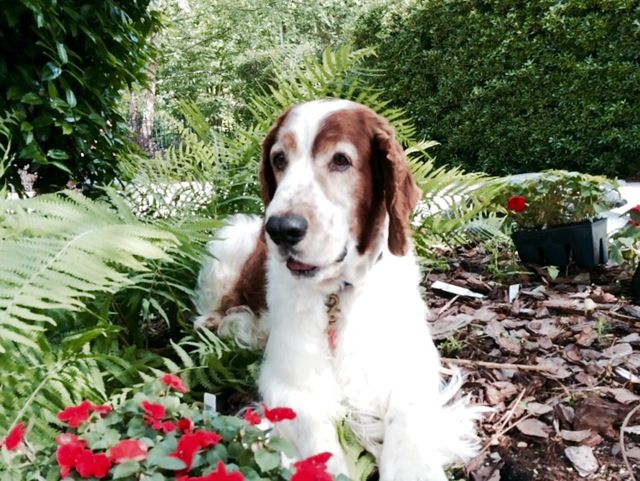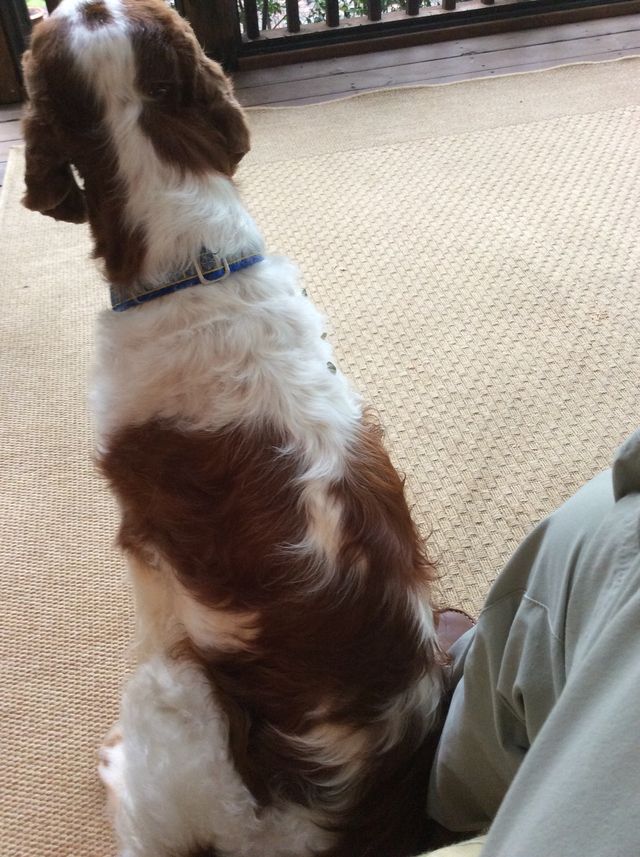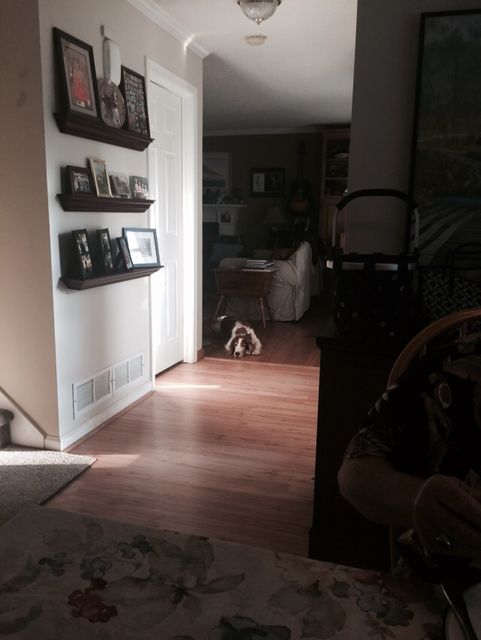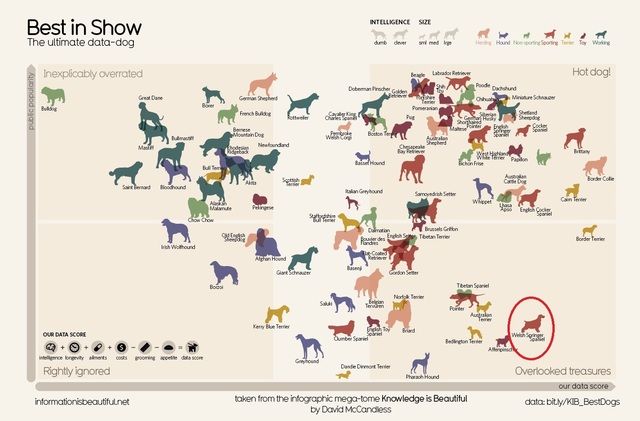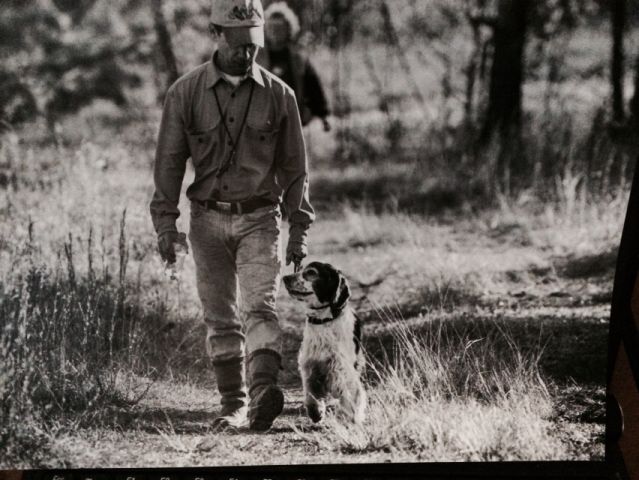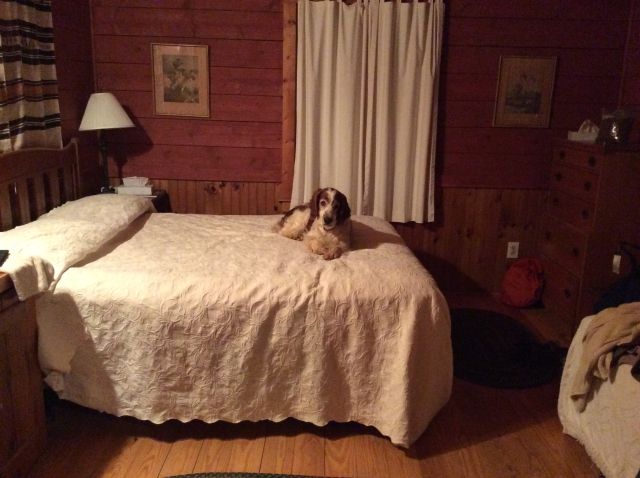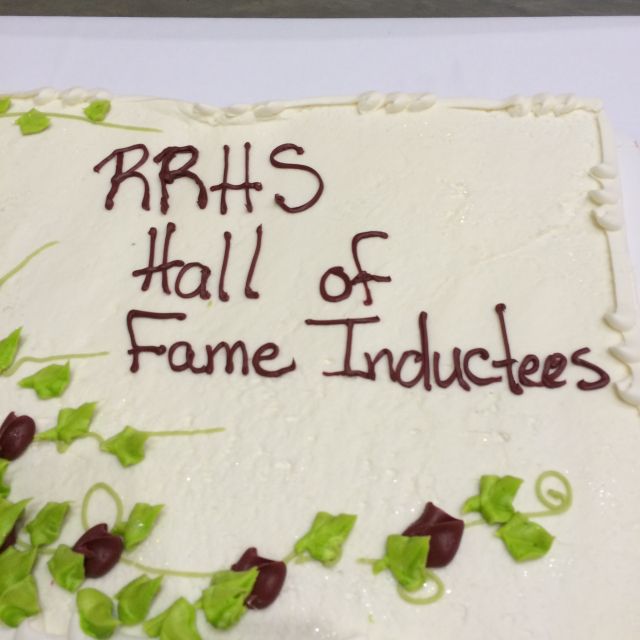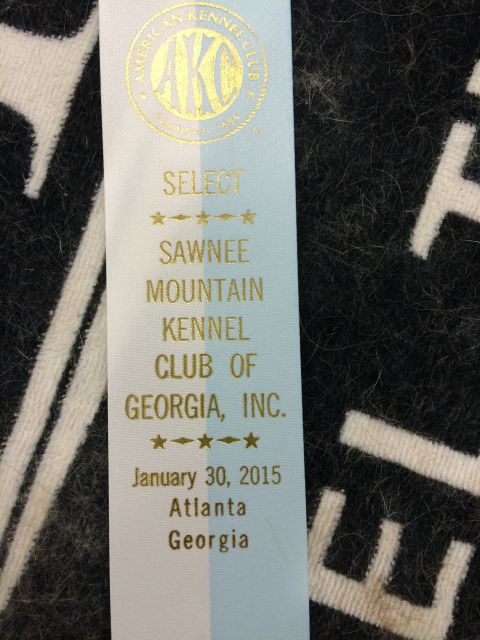We used pheasant at Luke Weaver's last Sunday, and the second one decided to run.
Larsen quartered his way out to the bird's last known position, and then swung around and headed off in a seemingly contrary direction. He looked birdie and intense, so I followed him. Al wasn't so sure, and lagged a little. I wish I'd had my gun in my hands.
Larsen found that bird and put him up, but all of the guns were too far away to do anything but salute the bird. Al thought he saw a tail feather waft. The pheasant flew to the far tree line, so I roped up Larsen and we walked across the field to the trees. I found a spot to release Larsen, and he went at a right-angle to my setup. He found the bird, and put it up, and this time Al hit her a bit harder. I released Larsen who went into the thick stuff to find the bird. Larsen lost the bird and doubled back to pick up the scent. He took a new tack to the wind and went back to the thicket.
I tried to follow but got tangled, so I backed out and just hoped for the best. Periodically, I saw red and white flash through the briars. Larsen tracked the bird down and brought her out, with a beautiful prance to his step. His delivery was just short, but Marilyn recommended that I just pick it up, which I did. Let's stay happy.
Larsen next went to the thicket and picked up another bird that had been shot but not found.
A nice 20 minute outing that let the happy dog hunt without the bother of overhandling and whistling.
Tuesday, October 20, 2015
Sunday, June 21, 2015
TV Time
Sitting on the grass in the back yard at mid-summer is a trifle boring for me. There's a clatter of squirrels, some lightning bugs becoming evident as evening approaches, a few birds flit. A car door closes.
For Larsen, I suppose this is like watching TV. He observes the tree bough bending as squirrels pass hither and yon. A bird is observed and logged in. A car door raises an eyebrow.
Real TV is too abstract for Larsen. Once in a while, he may respond to the cackle of a rooster on a youtube video, or to a sqeal from a videotaped litter of pups, but for the most part, it does not register.
The back yard, by contrast, is kalaediscopic, at least for him. I enjoy our little outings. He sits or leans on my leg, and observes the passing, knowing that I'm with him.
For Larsen, I suppose this is like watching TV. He observes the tree bough bending as squirrels pass hither and yon. A bird is observed and logged in. A car door raises an eyebrow.
Real TV is too abstract for Larsen. Once in a while, he may respond to the cackle of a rooster on a youtube video, or to a sqeal from a videotaped litter of pups, but for the most part, it does not register.
The back yard, by contrast, is kalaediscopic, at least for him. I enjoy our little outings. He sits or leans on my leg, and observes the passing, knowing that I'm with him.
Sunday, June 7, 2015
Hand delivery
We had a very warm practice this morning. One bird per dog and then a lot of water and shade.
Larsen's land work was very nice. He put up a very trappable pheasant, and then stayed with me until I let him fetch it. His second bird flew off. That's the breaks, Larsen, and I guess you don't get to chase the bird into the next ZIP code.
We continued to work on delivery to hand. I'm pondering when it is right to correct him and when to wait him out. The corrections are done fairly gently. He knows what he has to do, so when he does not perform, there is some reason he wants to dismiss me or keep the bird.
His return from the hunt dead is very nice, but his land and water to-hand need some thought and work.
Larsen's land work was very nice. He put up a very trappable pheasant, and then stayed with me until I let him fetch it. His second bird flew off. That's the breaks, Larsen, and I guess you don't get to chase the bird into the next ZIP code.
We continued to work on delivery to hand. I'm pondering when it is right to correct him and when to wait him out. The corrections are done fairly gently. He knows what he has to do, so when he does not perform, there is some reason he wants to dismiss me or keep the bird.
His return from the hunt dead is very nice, but his land and water to-hand need some thought and work.
Thursday, June 4, 2015
This is Spinal Tap
Larsen's back appears to be much better lately. There's a lot less of the crenalation along his spin, a lot less hunching. He has more springer-like spring in his step. Some of this is likely from a lot less activity in the last few months. I'll get him to Lake Alatoona this weekend for some swiming and hiking.
Snoopy gets laser heat treatment for his back.
Snoopy gets laser heat treatment for his back.
Wednesday, June 3, 2015
The AKC opened the Spaniel Hunt Test (now called the Upland Hunt Test) to curly-coated and flat-coated retrievers in 2012. Goldens and Labs were permitted in 2013.
The change is driven by the numbers. In 2012, Spaniels accounted for about 2,800 (2%) of all AKC Hunt Test entries. Retrievers accounted for about 70,000 (53%) of the AKC's entries (in Retriever tests) and pointers about 60,000 (45%).
Joe D. argues that the AKC's retriever have become overrun with trial washouts. The trialing world is quite competitive, and those that leave trialing for the AKC tests have distorted the original purpose of the AKC test, which is to provide a venue for the ordinary hunter to prove in his or her dog as a hunting companion. Even a small percentage of retrievers leaving the retrieving tests in favor of the upland tests can distort the nature of the Upland/Spaniel test and turn it into a new type of retriever test (with a focus on long water work and complex hunt deads). Retriever judges in the upland test would cause great changes as well.
Source: AKC Springer Hunt Test Judging Seminar, June 2, 2012.
The change is driven by the numbers. In 2012, Spaniels accounted for about 2,800 (2%) of all AKC Hunt Test entries. Retrievers accounted for about 70,000 (53%) of the AKC's entries (in Retriever tests) and pointers about 60,000 (45%).
Joe D. argues that the AKC's retriever have become overrun with trial washouts. The trialing world is quite competitive, and those that leave trialing for the AKC tests have distorted the original purpose of the AKC test, which is to provide a venue for the ordinary hunter to prove in his or her dog as a hunting companion. Even a small percentage of retrievers leaving the retrieving tests in favor of the upland tests can distort the nature of the Upland/Spaniel test and turn it into a new type of retriever test (with a focus on long water work and complex hunt deads). Retriever judges in the upland test would cause great changes as well.
Source: AKC Springer Hunt Test Judging Seminar, June 2, 2012.
Tuesday, June 2, 2015
Outing at Circle W
Larsen received a compliment from Shoni. She noted that when he hunted down a pheasant hen, he poked at it and caused her to fly, then he rocked back and sat. Easily, he could instead have trapped the bird.
A gundog's job is to produce game for the gun. It is exciting to watch a dog leap high after a pheasant, but the dog's primary responsibility is to get the bird aloft. Larsen's actions, on a trappable bird, demonstrated that he has gotten deeper understanding of the game.
Larsen enjoys a run in the field at Circle W in Heflin, AL.
A gundog's job is to produce game for the gun. It is exciting to watch a dog leap high after a pheasant, but the dog's primary responsibility is to get the bird aloft. Larsen's actions, on a trappable bird, demonstrated that he has gotten deeper understanding of the game.
Larsen enjoys a run in the field at Circle W in Heflin, AL.
Saturday, May 30, 2015
Wednesday, March 25, 2015
Overlooked treasure
Here's an analysis of 87 dog breeds and their respective popularity and rating. The author gathered data from AKC regarding registrations ("popularity") and other features about each dog breed and came up with a score. Then he arranged the analytical results to determine whether a breed's popularity was justified. The east and west quadrants reflect the overall desireability score (from low to high) and the north and south quadrants show the current popularity of dogs. The WSS, circled in red, is in the desireable, yet inexplicably unpopular category.
You can draw a vertical line from the WSS and hit the other spaniels, indicating similar scores with regard to intelligence, cost, longevity, ailments, grooming, and appetite, but the other spaniels are in the northern quadrant, indicating that they are priced out and popular. The Brittany is a bit further to the right, possibly due to lower costs and less grooming needs.
The data are available in the cloud here. The graphic is available here.
HT: Vox.com
You can draw a vertical line from the WSS and hit the other spaniels, indicating similar scores with regard to intelligence, cost, longevity, ailments, grooming, and appetite, but the other spaniels are in the northern quadrant, indicating that they are priced out and popular. The Brittany is a bit further to the right, possibly due to lower costs and less grooming needs.
The data are available in the cloud here. The graphic is available here.
HT: Vox.com
Wednesday, March 4, 2015
Burge training
I would not have traded the training time at Burge Plantation for the world. It made all of the difference for a dog that would sit on a sucker bird and return on a "leave it" command. It was a stressful number of days for Larsen, however, and that may have contributed to his near meltdown on Sunday.
However, I am convinced that we would not have gotten to that point without the practice time.
There is a balance between screwing the dog down and easing up on the pressure.
Here, Larsen enjoys a warm bed on a cold and sleeting February night between his work sessions in the field.
However, I am convinced that we would not have gotten to that point without the practice time.
There is a balance between screwing the dog down and easing up on the pressure.
Here, Larsen enjoys a warm bed on a cold and sleeting February night between his work sessions in the field.
Monday, March 2, 2015
Boy was that hard (part 2, the water)
Ah, the water.
I sent Larsen for the blind. He tentatively entered the muck, and circled. I pushed him as hard as I could: "back!" "back!". Larsen went into the water, verred to the end of the pond, nosed around, and popped a volunteer chukar. All this time, I had been hacking at the whistle and yelling "back!".
He played with the bird, and brought it back.
We were sent to the back of the line to re-try the blind.
Upon our return, there was more hacking, and more "backing". Very annoying to both of us. Larsen ran off some tweety birds, then returned to the peninsula at top speed to pick up his bird. Back he came, with a pretty messy retrieve.
Upon the water mark, he went out, then did not return directly to me. He went to the nearby peninsula to take the land route back. He went over to the area where he had rousted the volunteer, looking for another, then went into the water, swam to an island of grass, nosed around, picked up his bird, went ashore put his paw on the bird, plucked, then picked it up, and returned it to me for yet another fumbling handoff.
By this time man and beast were at the ends of their respective ropes. I had hacked myself out, and he had peed in the grass to display his displeasure with my actions. It was a battle of wills with two tired and irritated participants. Larsen and I earned that ribbon in the sense of knowing now that we must return to the fun and camaraderie of the hunt.
I sent Larsen for the blind. He tentatively entered the muck, and circled. I pushed him as hard as I could: "back!" "back!". Larsen went into the water, verred to the end of the pond, nosed around, and popped a volunteer chukar. All this time, I had been hacking at the whistle and yelling "back!".
He played with the bird, and brought it back.
We were sent to the back of the line to re-try the blind.
Upon our return, there was more hacking, and more "backing". Very annoying to both of us. Larsen ran off some tweety birds, then returned to the peninsula at top speed to pick up his bird. Back he came, with a pretty messy retrieve.
Upon the water mark, he went out, then did not return directly to me. He went to the nearby peninsula to take the land route back. He went over to the area where he had rousted the volunteer, looking for another, then went into the water, swam to an island of grass, nosed around, picked up his bird, went ashore put his paw on the bird, plucked, then picked it up, and returned it to me for yet another fumbling handoff.
By this time man and beast were at the ends of their respective ropes. I had hacked myself out, and he had peed in the grass to display his displeasure with my actions. It was a battle of wills with two tired and irritated participants. Larsen and I earned that ribbon in the sense of knowing now that we must return to the fun and camaraderie of the hunt.
Boy, was that hard
Larsen and I got a fourth Master Hunter leg at the Boykin Spaniel test in Cheraw, SC on Sunday. The test was very hard for us and taught us some lessons. On land, I erred by hacking Larsen away from birds on the periphery, past the gunners. I was under the impression that the dog was to hunt (basically) gun-to-gun.
Susan W., one of the judges told me that she said birds were planted beyond the guns. I was not listening. "I know," she said. I was instead trying to tune out the noise judges sometimes make and focus entirely on my dog. I guess I missed something.
Larsen obeyed my calls and did not flush those birds, but because of mistake #1, I was hacking him a lot.
Larsen sat on a sucker bird. He bounced, but he sat. This had been our first sucker bird in a long time and there was no telling what he might do, but he sat, and returned after my "leave it" command.
Larsen had a patented long retrieve. I did not pip once. He was sent for a fallen bird 60+ yards out. He took off, did a big circle on one side (wrong wind side) of the bird, then trotted to the other side and did a big circle, identified the scent, and made the retrieve. The handoff to me was a little sloppy, but it got the job done.
On hunt-dead, Larsen first went to the basket of birds. He returned to me upon my pip, and shifted into a joyful full-out run on my "back" command. He missed the bird, so I sat him. As he sat (about 30 yards out), he looked over his shoulder, obviously scenting the bird about 20 yards behind him. I simply let him go, and he went directly to the bird and brought it back.
Water work was coming up.
Susan W., one of the judges told me that she said birds were planted beyond the guns. I was not listening. "I know," she said. I was instead trying to tune out the noise judges sometimes make and focus entirely on my dog. I guess I missed something.
Larsen obeyed my calls and did not flush those birds, but because of mistake #1, I was hacking him a lot.
Larsen sat on a sucker bird. He bounced, but he sat. This had been our first sucker bird in a long time and there was no telling what he might do, but he sat, and returned after my "leave it" command.
Larsen had a patented long retrieve. I did not pip once. He was sent for a fallen bird 60+ yards out. He took off, did a big circle on one side (wrong wind side) of the bird, then trotted to the other side and did a big circle, identified the scent, and made the retrieve. The handoff to me was a little sloppy, but it got the job done.
On hunt-dead, Larsen first went to the basket of birds. He returned to me upon my pip, and shifted into a joyful full-out run on my "back" command. He missed the bird, so I sat him. As he sat (about 30 yards out), he looked over his shoulder, obviously scenting the bird about 20 yards behind him. I simply let him go, and he went directly to the bird and brought it back.
Water work was coming up.
Friday, January 30, 2015
Hall of Fame induction
15 of the 26 boys from the 1970 soccer team enjoyed an evening at the high school and be inducted into the athletic hall of fame. Another day and age ago.
Blue (and white) ribbon
Aki and Larsen took a twirl around the ring and earned a "select" ribbon. Although the two did not win, the designation indicates that the judge liked what he saw.
Larsen's back is loosening up and he has more spring in his step. Aki is growing more confident about her handling and can start to think about Larsen's presentation instead of her own movements.
Larsen's back is loosening up and he has more spring in his step. Aki is growing more confident about her handling and can start to think about Larsen's presentation instead of her own movements.
Thursday, January 29, 2015
Tuesday, January 20, 2015
Notes from Burge
From last December:
- Only allow Larsen to retrieve when I invite him to.
- Always go to him. Make him accept my head pat.
- Stay on my line when handling. Make him understand that I won't follow him around. We are hunting together.
- Control his ground.
- Command only once.
- Do not plead with the whistle.
- If not obeyed, go to a different method of enforcement.
- Mix up training or play.
- Sometimes call him away, then hunt him away.
- Perhaps send for the dead.
- Invite him to retrieve.
- One out of every 5 can I send him on a shot burd.
- Any time there is a hup, walk up to him and pat him. Then recast him or whatever.
- Keep a clip-wing with me. Toss it out when he's moving and tell him to leave it.
- That's my fall-back.
- Challenge him on his retrieves. Don't let him go onto his retrieves. He knows this part.
Wednesday, December 31, 2014
Looking back and forth
There remains an afterglow of Larsen's accomplishment earlier this month. The backdrop for this accomplishment is the months of healing from Larsen's iliopsoas strain, and the consequential, but in hindsight mistaken, exploratory surgery. The veterinary claim is that after 6 weeks, the healing is done with. However, as with humans, it seems that age reveals again all manner of injuries that in youth were healed and done with. So I keep an eye on him and coddle him a bit by lifting him in and out of the car, for example.
I've had some successful outings with quail. I'll try him on chukar, with the e-collar as a reminder that sitting is an absolute precondition to being released for a fetch.
February provides for the ESS and Bokin tests. Joe has said that it's not until the 2nd master leg that the dog can be said to be hunting at the master level. Let's see if we can move in that direction.
Tuesday, December 9, 2014
Why this picture is worth looking at again

This photo is beautiful in its own right, reminiscent of an oil painting. Aki took the picture in early December in middle Georgia during the waning afternoon hours of a hunt test.
Larsen has come ashore after a water retrieve, the last event of the day. The broom straw and pine provide a soft, abstract background. Water from the wet dog glitters in the afternoon's light. A catchlight in Larsen's eye brings him to life and attracts you to the warm, loving look on face, despite being partly obscured by the bird. It's not unusual for a spaniel to let the bird's wing cover his nose. He gets bird scent with every breath. Larsen's eyes and tilt of his head show that he is retrieving because he loves me. The wing over his nose tells him that the bird is his. Larsen's face has a touch of grey. He will be 8 in March. This is a dog that knows what he is doing. There is a confident set in his body that belies the soft look in his face. Larsen's tail is up and cocked slightly to his right, in keeping with his trot, like a metronome. The confident gait is shown in the backward sweep of his left forefoot. His eyes may be loving, but that tail and stride displays his feeling of pride in his work.
In the upland dog world, a hunt test is a singular activity. The finding and capture of game calls forth centuries of breed characteristics. You can look at this picture and go back a 100 or more years and see another Welsh Springer in another place and time bringing a perfect end to a perfect day.
Subscribe to:
Comments (Atom)






